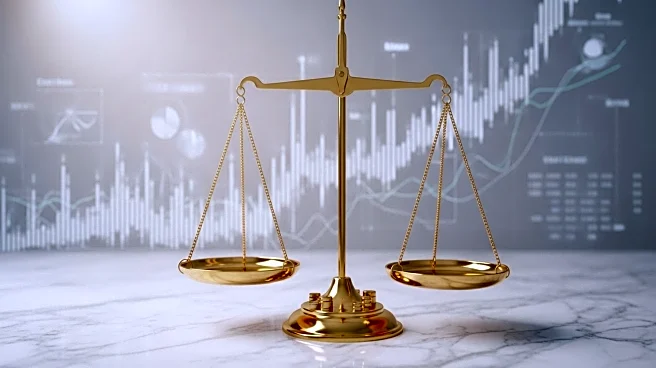What is the story about?
What's Happening?
JPMorgan Chase has released a forecast indicating a significant slowdown in U.S. GDP growth towards the end of 2025 and into the beginning of 2026. The firm predicts that the U.S. gross domestic product will maintain a 2.5% annualized growth rate in the third quarter of 2025 but will decrease to approximately 1.2% in the fourth quarter and the first quarter of 2026. This anticipated slowdown is attributed to a deceleration in the labor market and consumer spending. Economist Nora Szentivanyi noted that employment gains have stalled, and hours worked are contracting, which is unusual for an economy expected to generate above-potential growth. The Commerce Department is set to release its August data on personal income and spending, which will provide further insights into economic trends.
Why It's Important?
The forecasted slowdown in GDP growth is significant as consumer spending constitutes over two-thirds of U.S. economic activity. A reduction in consumer spending could have widespread implications for the broader economy, affecting various sectors and potentially leading to decreased business investments and hiring. The discrepancy between JPMorgan's forecast and the Atlanta Fed's GDPNow tracker, which predicts a 3.3% growth in Q3, highlights differing economic outlooks. The Federal Open Market Committee has updated its full-year GDP growth outlook to 1.6%, slightly higher than previous estimates, indicating cautious optimism. The global economic context also suggests a downshift in growth, with advanced economies expected to grow at a slower pace.
What's Next?
The upcoming release of August's personal income and spending data by the Commerce Department will be crucial in understanding the trajectory of consumer spending and its impact on GDP growth. Stakeholders, including policymakers and businesses, will closely monitor these figures to adjust strategies and expectations. The Federal Reserve's principal inflation gauge, the personal consumption expenditures price indexes, will also be pivotal in assessing inflationary pressures and guiding monetary policy decisions.
AI Generated Content
Do you find this article useful?














